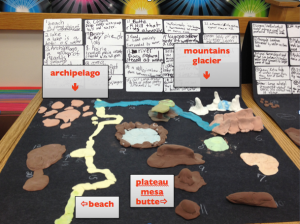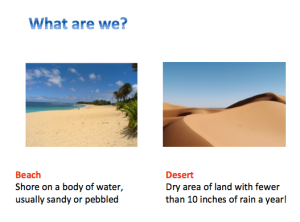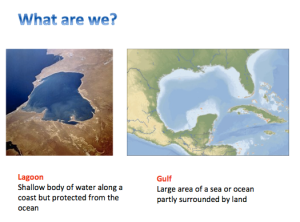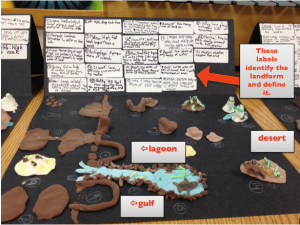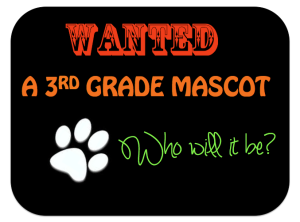November 6th, 2012 may have come and gone, but that doesn’t mean we have to wait for 2016 to teach children about the election process. Going into September with the knowledge that election day loomed ahead – perhaps the biggest “teachable moment” moment in a social studies teacher’s career - I knew I had to find some curricula inspiration. What I came up with was The 3rd Grade Mascot Election – a parallel (and slightly less-televised) election to Presidential race.
Lesson length: 45 minutes Unit Length: 1 class per week/6 weeks
Lesson 1: I started with a PowerPoint presentation to my classes, to introduce the four candidates. First, they were given the candidates’ superficial characteristics – favorite foods, states they hail from, hobbies – to segue into discussion on the qualities that matter in a leader. It was interesting to hear how students initially gravitated toward one choice over the others based on a shared peanut allergy, or love of the Chicago Bulls (The candidates had some odd bios – and coming up with them was 3/4 of the fun!) We talked about the trouble this could get us into if we were to choose the President on similar superficial issues. As the follow-up piece in their election folders, students wrote about “What it means to be a leader.”
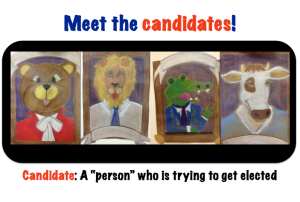 |
| Samples of the PowerPoint |
 |
| Writing prompt sample from the folders |
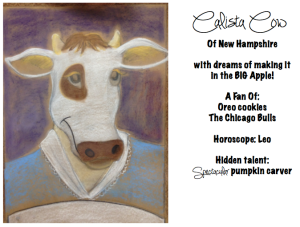 |
| The kids meet Calista for the first time |
Lesson 2-5: From here I explained that since the candidates were running to be the mascot of our grade, we needed to hear what their thoughts were on the campaign issues that mattered to us. I hung the pictures of the candidates in the hall, with speech bubbles beside them as the vehicle for sharing their platform. Every Monday I would change the speech bubbles to address a new issue. For the rest of the week students could read about the candidates’ take on the new issue. The issues that were introduced each week were:
- The Lunch and Snack Policy
- Length of Recess and Location of Recess (Our school has 2 recess locations - the playground and the field)
- Academic Focus (Meaning which subjects are taught more)
- Homework Policy
On Friday, students would come to class ready to talk about the candidates’ latest position. We would keep track of the candidates’ platform on charts in our Election Folders. We talked about the importance of looking at a candidate as a whole – not just focusing on one issue. However, we also talked about how some issues are more important to us personally than other issues – and how this might affect how we feel about a candidate. At the end of every class students had a chance to write about who they were thinking of voting for on November 6th and why.
 |
| Election display in the hallway! |
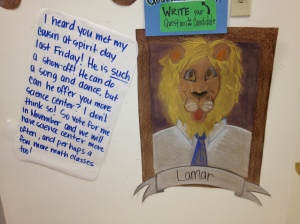 |
| Hearing from Lamar Lion |
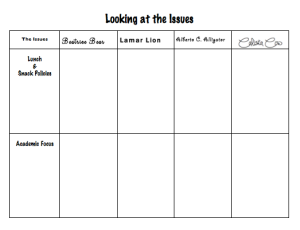 |
| Charting the Issues: Sample follow-up |
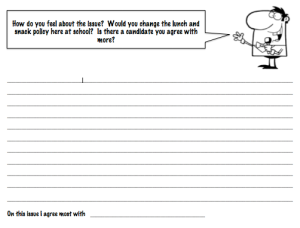 |
| Kids have a chance to share their opinions, ask questions, and present compromises. |
Talking about the candidates' platform and completing charts doesn’t take a whole period, leaving plenty of time to delve into other election projects. One fun activity we did early on was work in table groups, coming up with changes we would like to see happen at our school. Some of the ideas were flat out insane. Most, however, were practical and heartfelt,and some gave new insight into what truly matters to certain kids – A nurse’s station near the recess yard, less pasta at lunch, more independent reading time during the day, a staff room for kids (I loved the misguided thinking on this one). Students came up with the ideas as a group, but put them in different sized bubbles reflecting how important the issue was to them personally.
Other activities included: Making voter registration cards, Campaign posters, Reading about Barack Obama and Mitt Romney, & Sharing what we would do if were were elected President.
One of the best follow-up activities was our SKYPE date with the candidates. Each of the 4 classes was assigned candidate, and each candidate got a skype address – example: Beatricebear (yes, she is indeed out there in cyberspace now). My friend – the loveliest science teacher ever – had students come up with questions for Beatrice about her platform. I, hiding in random school offices, put on my bear-iest voice, and answered the questions to the best of my ability. Some were not fooled, but it was highly entertaining for all.
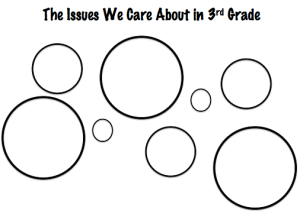 |
| Issues that Matter Bubbles |
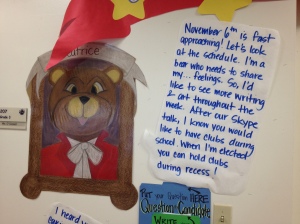 |
| Beatrice Comments on our Skype Date! |
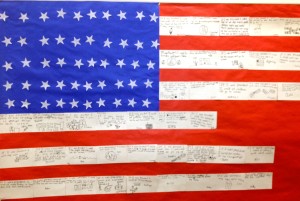 |
| If I Were President - Activity (Work in Progress) |
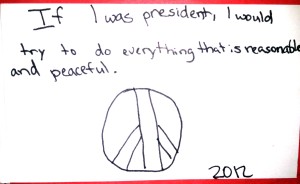 |
| Example of an index card from the flag |
Finally. November 6th arrives. Hurricane Sandy has set us back a little and we have missed a week of school, but we are prepared. For the past 6 weeks we have talked about our candidates and talked about the issues. A chart with a summary of points has been hung across from the portraits of Beatrice, Lamar, Calista and Alberto. Now it is time to vote. Students filled out a ballot card, took an “I VOTED” pencil and went on their merry way.
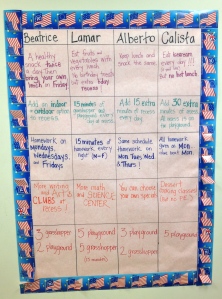 |
| The summary of each candidates position. This chart helped students compare their candidates' views on similar issues. |
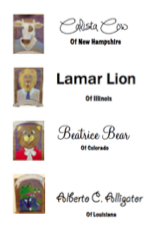 |
| Circle Your Mascot Choice! Ballot Cards |
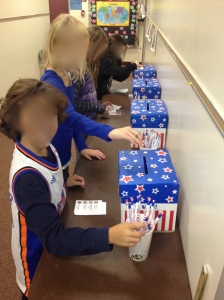 |
| November 6th: Voting!!! |
If you’re curious - Alberto C. Alligator won. THE NEW 3RD GRADE MASCOT! The most conservative of all the candidates, he brings little change to our, evidently, perfect school. He did campaign to add 15 extra minutes of recess and so to celebrate we dedicated one day to enacting all of Alberto’s changes.
All in all, this unit required a considerable amount of pre-planning, but once under way it was relatively simple to keep up...and the students and parents loved it.













